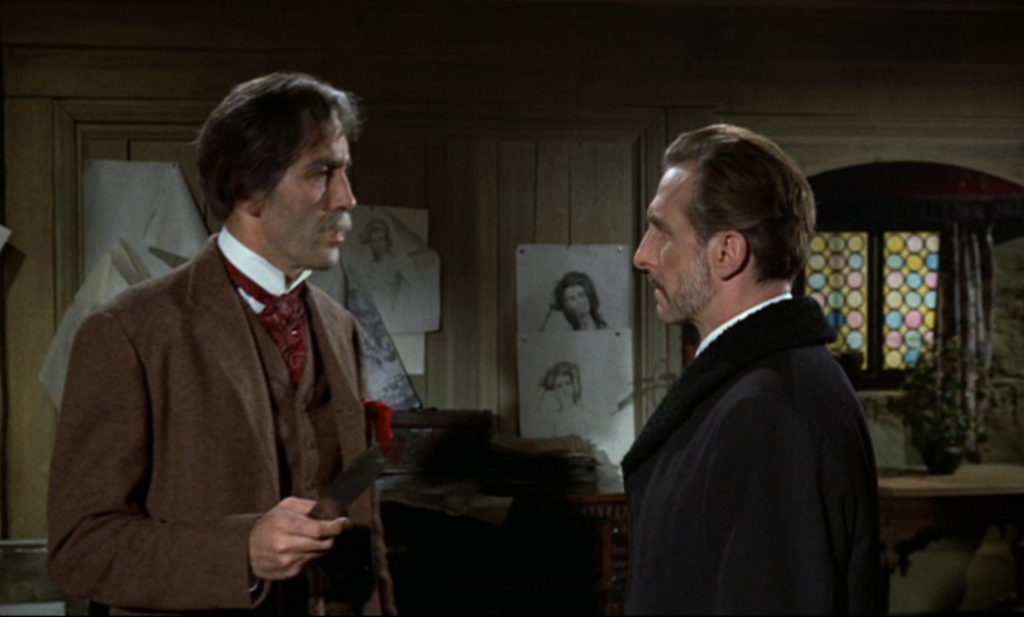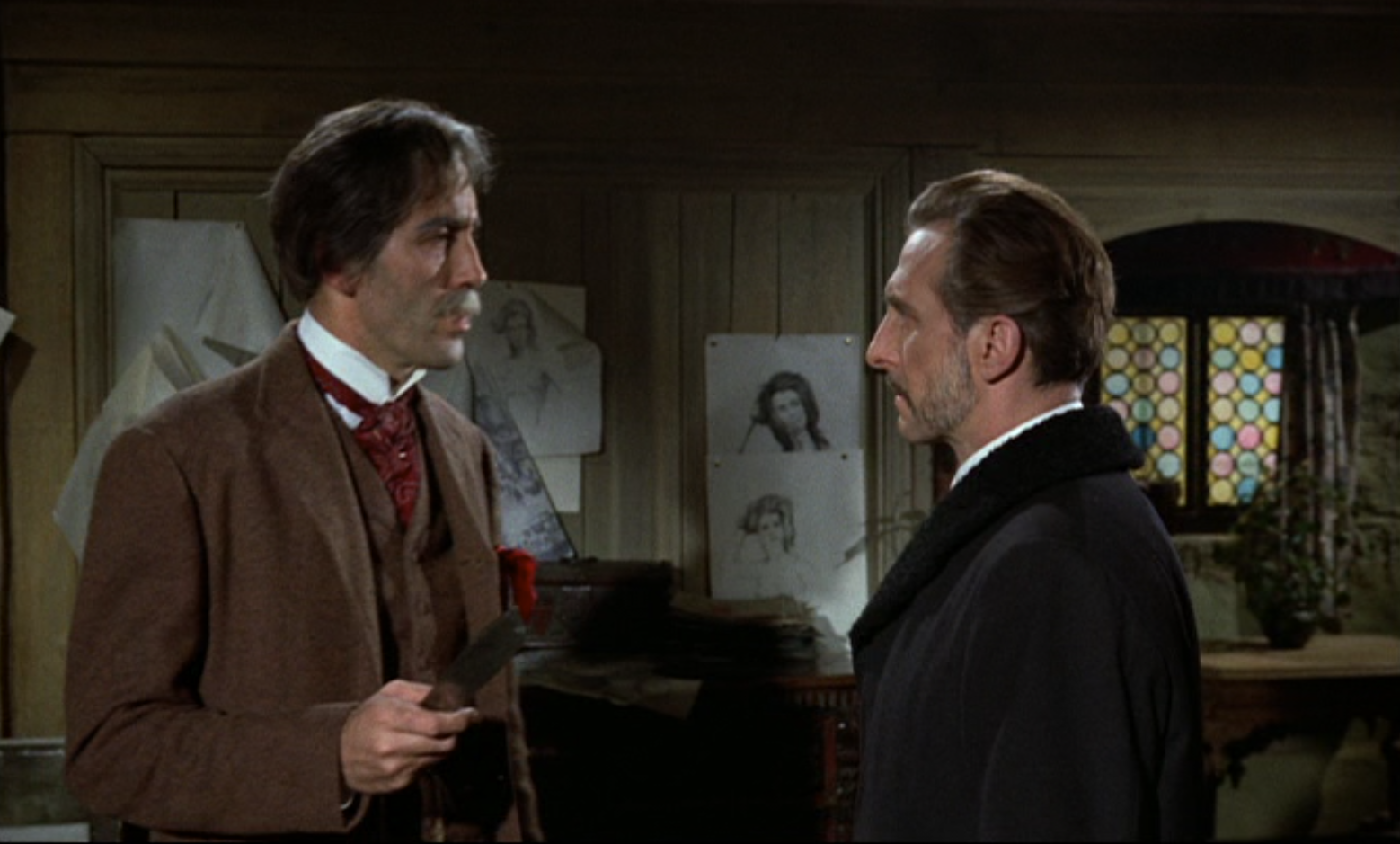Movie Review: The Gorgon (1964) directed by Terence Fisher
It is 1908, and the police state of Van Dorf has had seven unsolved murders in five years. When painter Bruno Heizt’s (Jeremy Longhurst) model and lover turns up dead and himself hanged, the police, led by Inspector Kanof (Patrick Troughton), are quick to call it murder-suicide. They are aided in this by the local physician, Dr. Namaroff (Peter Cushing) whose testimony at the inquest leaves out the important detail that the woman’s corpse had turned to stone, something most artists aren’t capable of doing.

Professor Jules Heizt (Michael Goodliffe), father of Bruno, isn’t convinced. He noticed how shallow and evasive the testimony at the inquest was, and how railroaded the verdict seemed. Despite the hostility of the locals, Professor Heizt is determined to stay and uncover the truth. Soon, he too is dead, but he leaves a message behind.
Now it’s time for Bruno’s brother Paul Heizt (Richard Pasco) to take up the investigation. After a near-death experience, he forms a bond with Dr. Namaroff’s lovely nurse/assistant Carla Hoffman (Barbara Shelley), who has problems of her own. Paul still isn’t getting any straight answers, so it’s a good thing his mentor, Professor Karl Meister (Christopher Lee) arrives from Leipzig to help.
This minor Hammer film has the advantage of featuring two of horror fans’ favorite actors, and makes economical use of a limited number of sets. It has a relatively rare central monster, the gorgon named Megaera (Prudence Hyman), who mixes elements of the sisters of Medusa and the Furies from Greek mythology. Despite last being reported in Greece two millennia before, somehow Megaera manifested in a castle in Van Dorf in the 1850s, killing everyone on site. The castle is now abandoned, and none of the locals go near it. Then the gorgon was quiescent for decades, only starting to kill again about five years ago..for some reason.
The time and place setting of the movie work well, allowing Hammer Studios to use costumes and props that look suitably old-fashioned but would still be inexpensive to obtain in the 1960s.
The suspense builds nicely, even if the romantic subplot feels forced. This is one of those movies where the decision to keep the monster mostly off-stage, only seen in short glimpses or reflections until the ending was a good one. Because the one thing that really falls down is the special effects for the Gorgon itself. Without Ray Harryhausen or another master of effects, or today’s computer magic, Megaera is disappointing. Possibly this is why, despite the obvious excuse for the movie to have a sequel, it never did.
Political: The police are negatively portrayed. They throw their weight around with civilians, refuse to go into situations where they might be in actual danger, engage in cover-ups to protect their jobs, and have to be threatened to provide needed background information. There’s no police brutality on screen, but it’s made pointedly clear they won’t stop a mob from attacking outsiders if those outsiders don’t stop snooping. At no time do the police contribute to protecting people from or actively investigating the monster.
The ending is a downer.
Content note: Apparent suicide by hanging. Female nudity from behind. Bruno and his model have been having extramarital sex, and she’s pregnant because of that. A surprisingly small amount of gore (I think I got the toned-down American cut.) Early Twentieth Century (mis)treatment of the mentally ill.
Overall: A middling horror film with a good structure, solid performances by the headline actors, and a disappointing monster. If you like Lee, Cushing, Hammer Studios or the more staid kinds of horror movie, this is worth your while. Turn down the lights, get comfy and enjoy the show!

